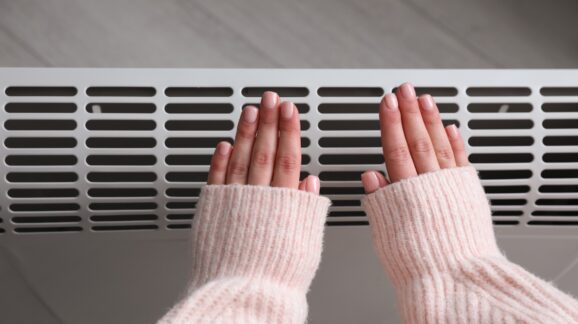A Tough Winter Ahead for Heating Bills, According to the U.S. Energy Information Administration

Photo Credit: Getty
High gasoline prices will soon have an equally unpleasant partner in the form of high energy bills this winter, according to the U.S. Energy Information Administration’s (EIA) new Winter Fuels Outlook.
The news is bad no matter how you heat your home. The 46 percent of households that heat with natural gas are predicted to see a 28 percent cost increase over last winter to $931. The 41 percent who heat with electricity face a 10 percent jump up to $1,359. Note that higher electric bills are also tied to high natural gas prices, as natural gas is the most common energy source for electric generation. These are just the increases over last winter, the first one under the Biden administration, which were also considerably costlier than previous winters.
Most of the remaining homes heat with propane or heating oil, which face increases of 5 percent and 27 percent, respectively. And these sources of heat are more common in the coldest-weather states with the greatest demand for heat and thus the highest costs to get through the winter.
The double whammy of higher gasoline prices and heating costs could make 2022 the most expensive one in a very long time in terms of household energy expenditures, and pose a disproportionate burden for low income households. “A lot of people may not have known what energy poverty was before, but they’ll find out now,” notes energy analyst Derrick Hollie with Project 21. Back in 2018, the EIA estimated that one in three households faced a challenge in meeting their energy needs, but now the percentage is likely to skyrocket.
The EIA is relying on predictions of a slightly colder-than-average winter. Of course, America could luck out and have a milder-that-predicted winter, but it is just as likely we’ll see one that is colder (and costlier) than expected. EIA notes that we head into the winter months with below-average storage levels for natural gas, which suggests that at least some of the bad news may already be baked in.
As with the pain at the gas pump, higher heating costs have been exacerbated by the climate change agenda. Granted, the war in Ukraine and post-COVID demand recovery are also contributors, but the impact of these factors could have been reduced had it not been for domestic policies, such as opposition to natural gas leasing on federal lands and permitting roadblocks facing much-needed natural gas pipeline infrastructure. Also, the closure of many coal-fired power plants over the past decade limits the ability of utilities relying on natural gas to avoid currently-high prices by fuel switching, notes EIA.
This upcoming winter will be the second one in row where climate policies have added to the homeowner pain. And, absent an effort to reconsider these policies, heating bills in future winters are likely to be even higher.